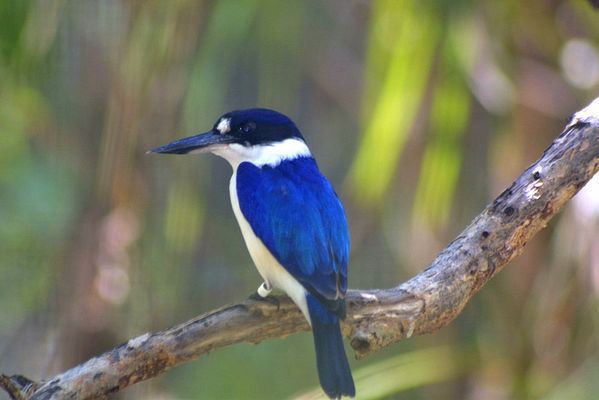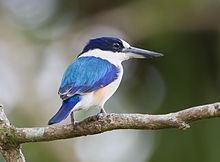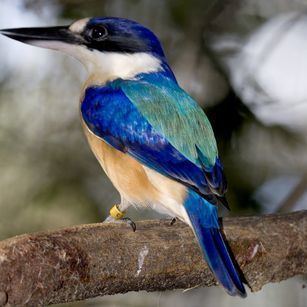Subfamily Halcyoninae Rank Species | Phylum Chordata Family Alcedinidae Higher classification Todiramphus | |
 | ||
Similar Todiramphus, Sacred kingfisher, Red‑backed kingfisher, Blue‑winged kookaburra, Buff‑breasted paradise kingfisher | ||
Forest kingfisher halcyon todiramphus macleayii
The forest kingfisher (Todiramphus macleayii), also known as the Macleay's or blue kingfisher, is a species of kingfisher in the subfamily Halcyoninae, also known as tree kingfishers. It is a predominantly blue and white bird. It is found in Indonesia, New Guinea and coastal eastern and northern Australia. Like many other kingfishers, it hunts invertebrates and small frogs and lizards.
Contents
- Forest kingfisher halcyon todiramphus macleayii
- Forest kingfisher todiramphus macleayii
- Taxonomy
- Description
- Distribution and habitat
- Feeding
- Breeding
- References
Forest kingfisher todiramphus macleayii
Taxonomy
The forest kingfisher was first described by the naturalists Sir William Jardine and Prideaux John Selby in 1830. It was known for many years by its old scientific name of Halcyon macleayi before being transferred to the genus Todiramphus. Two subspecies are recognised:
Description

Measuring 21.5–25.5 cm (8.5–10.0 in), the forest kingfisher has blue wings, head and tail with white breast, abdomen and nape. It has a white patch in front of the eyes and a black band stretching from the bill, through the eyes and to the ear coverts. A white patch is visible on the wings in flight. The female is distinguished by a blue rather than white nape. The iris is dark brown and the legs and feet dark grey. Immature birds are duller with a blackish crown. The call is a shrill t-reek, repeated regularly, most often in the early morning.
Distribution and habitat

The forest kingfisher is native to Indonesia, Papua New Guinea, the Solomon Islands, and Australia, where it is found on or near the Australian Coastline from Port Stephens in New South Wales northwards to Cape York and westwards across the Top End. It is a summer visitor in the southern parts of its range in New South Wales and southern Queensland; elsewhere it is resident all year round.

As its name suggests, it inhabits subtropical or tropical dry forests, subtropical or tropical moist lowland forests, and subtropical or tropical mangrove forests and Melaleuca swampland.
Feeding

The forest kingfisher hunts invertebrates, such as bugs, beetles, grasshoppers, spiders, and worms, as well as small frogs and lizards. It often kills prey by hitting it against a branch after seizing it.
Breeding
Breeding season is October to January in Australia with one brood raised. The nest is a short burrow into a round chamber within an arboreal termite nest, around 10–12 m (33–39 ft) above the ground. Three to six white shiny eggs are laid, measuring 25 mm x 22 mm. Fledglings are fed for around a month before they leave the nest.
